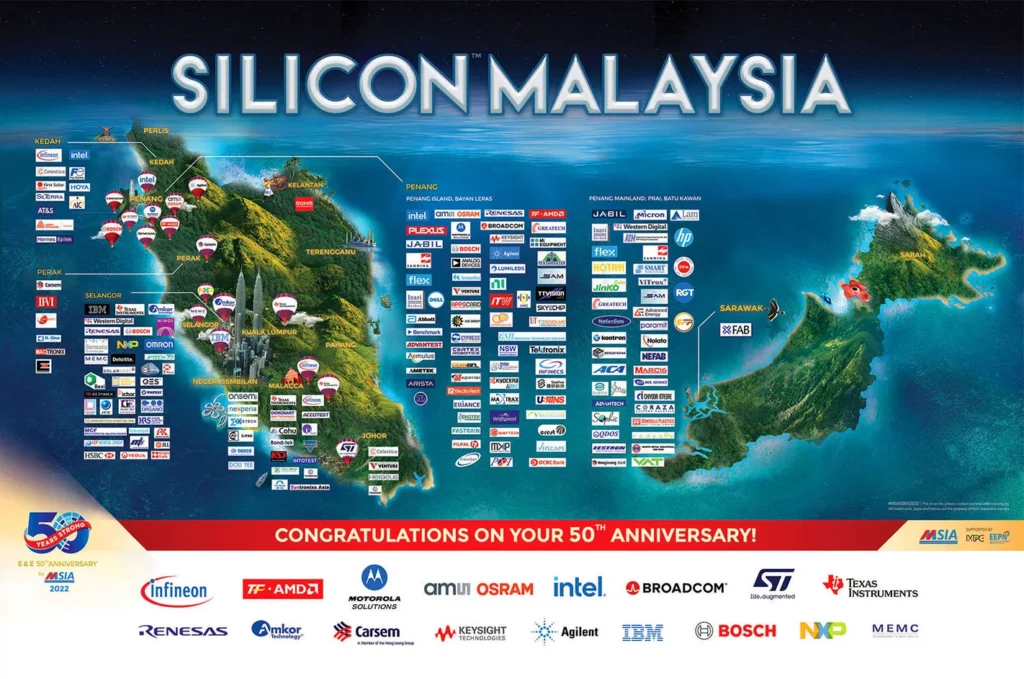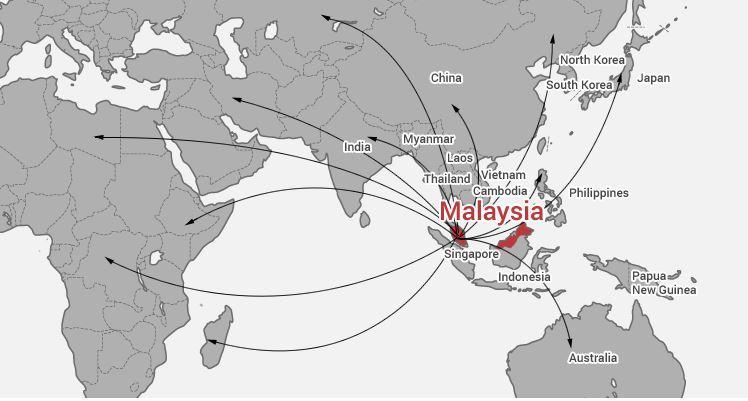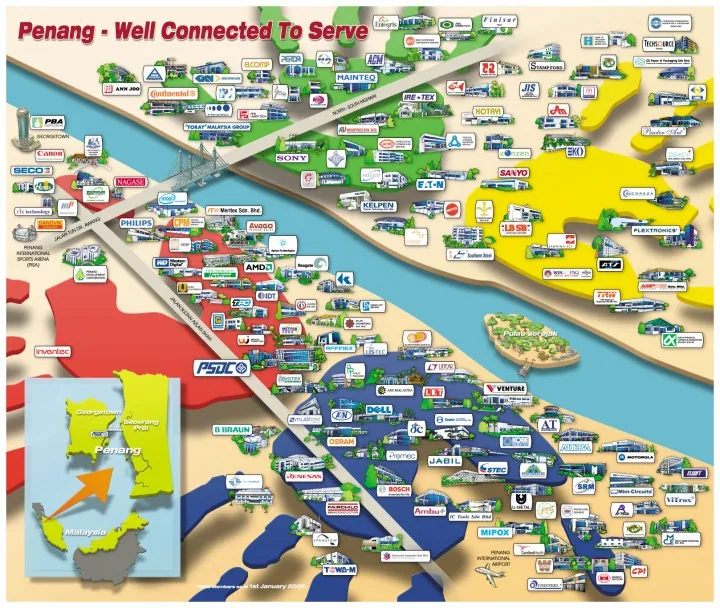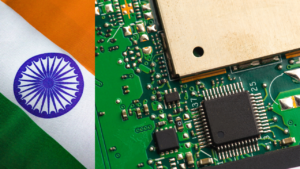Introduction:
The semiconductor industry has long been at the forefront of technological innovation, powering devices that shape our modern world. In recent years, geopolitical tensions between the US-China Chip Wars have disrupted the global semiconductor supply chain, leading companies to seek alternative manufacturing hubs. Amidst this backdrop, Malaysia has emerged as a Surprise Winner attracting significant investment and transforming into a semiconductor powerhouse.
- Major Investments: Tech giants like Intel and Micron are investing billions of dollars in expanding their facilities in Penang. This signifies the confidence these companies have in Penang’s potential.
- Diversification of Investors: Previously, most investments came from Western companies. Now, Penang is attracting significant investments from Chinese and European companies as well. This creates a more balanced and dynamic ecosystem.
Follow us on Linkedin for everything around Semiconductors & AI
Malaysia’s semiconductor industry has experienced a significant influx of foreign direct investment (FDI) in recent years, reaching RM60.1 billion ($12.8 billion) in 2023.

Intel: Invested a whopping US$7 billion for expansion in Malaysia. This signifies a move towards more complex activities for Intel within the country.
Texas Instruments (TI): Committed US$3.1 billion to boost its production capacity in Malaysia.
Infineon: Another major player, Infineon, announced a US$5.5 billion investment in Malaysia.
This surge in investment has fueled the expansion of semiconductor manufacturing facilities across the country, with major players. Intel cis ommitting billions of dollars to build new chip assembly and testing facilities.
The investment is a testament to Malaysia’s growing importance in the global semiconductor supply chain.
While Malaysia has traditionally focused on the “back end” of semiconductor manufacturing, there is a concerted effort to move up the value chain and engage in higher-value activities such as wafer fabrication and integrated circuit design.
Investments in advanced packaging technologies, automation, and research and development are driving this transition, positioning Malaysia as a key player in the global semiconductor market.
Comparison to Other Southeast Asian Countries:
While other Southeast Asian nations are also vying for a piece of the chip manufacturing pie, Malaysia has some distinct advantages:
Political Stability: Malaysia offers a relatively stable political environment compared to some of its neighbors. This is a major factor for companies making long-term investments.
Proven Track Record: Malaysia already has a well-established semiconductor industry with a proven track record of success. This inspires confidence in companies looking to relocate their operations.
4 Reasons Why Malaysia is Becoming A Surprise Winner from US-China Chip War
1. Geopolitical Dynamics & Strategic location of Malaysia:
The escalating trade tensions between the US and China have prompted multinational companies to reassess their manufacturing strategies.
Concerns over supply chain disruptions and trade restrictions have spurred a global shift towards diversification.

Malayasia has a Established Infrastructure:
Logistics Hub: Malaysia has a well-developed network of ports, airports, and highways. This robust transportation system allows for efficient movement of raw materials, finished chips, and everything in between. This is crucial, as chip manufacturing involves a complex global supply chain.
Special Economic Zones (SEZs): Malaysia has established special economic zones dedicated to electronics manufacturing. These zones offer tax breaks, streamlined regulations, and pre-built facilities, making it easier and cheaper for companies to set up shop.
Reliable Utilities: Consistent access to power and water is essential for chip production. Malaysia has a proven track record of providing reliable utilities at competitive rates.
Malaysia’s stable political climate, favorable business environment, and strategic location have positioned it as an attractive destination for semiconductor investment, offering a reliable alternative to China.
2. Skilled Workforce:
History in Electronics: Malaysia has a long history of being a center for electronics manufacturing. This has led to a large pool of skilled workers experienced in various aspects of chip assembly and testing.

Intel first plant in Malaysia
Government Initiatives: The Malaysian government is actively investing in technical education and training programs specifically focused on the semiconductor industry. This ensures a steady pipeline of talent to meet the growing demand.
Multilingual Workforce: Many Malaysians are proficient in English, which is the primary language of communication in the global chip industry. This eliminates language barriers and fosters smooth collaboration.
3. The Rise of Penang:
Penang’s strong foundation, combined with government support and strategic location, has positioned it as the epicenter of Malaysia’s chip manufacturing boom. It’s a prime example of how Malaysia is capitalizing on the global chip war to establish itself as a major player in the semiconductor industry.

Here’s why it’s become a magnet for chipmakers:
Head Start and Existing Ecosystem: Penang began attracting electronics giants like Intel in the 1970s. This early investment laid the groundwork for a strong ecosystem with established suppliers, research facilities, and a skilled talent pool. New companies can leverage this existing network, making it easier and faster to set up operations.
Government Support: The Malaysian government has designated Penang as a free-trade zone, offering tax incentives and other benefits to attract foreign direct investment (FDI). This financial support makes Penang a more attractive location compared to other regions.
Focus on Advanced Technologies: Penang is moving beyond just assembly and testing. The state is actively attracting companies involved in design and fabrication, the more high-value stages of chip production. This allows companies to create a complete chip-making ecosystem within Penang.
Strong Infrastructure: Penang boasts excellent physical infrastructure with modern ports, well-maintained roads, and an international airport. This facilitates the smooth import of raw materials and export of finished chips. Additionally, reliable utilities like power and water are crucial for chip production, and Penang has a proven track record of providing them.
Strategic Location: Penang’s geographical position makes it ideal for global trade. It’s close to major shipping routes and offers easy access to regional markets like China, Southeast Asia, and India. This strategic location allows companies to efficiently manage their supply chains and reach a wider customer base.
Read More: Chat with Any PDF: Powered By ChatGPT – techovedas
4. The China Plus One Strategy:
China Plus One Strategy isn’t specifically designed for Malaysia, but it’s a trend that Malaysia stands to benefit from.
The China Plus One Strategy is a response to companies looking to diversify their supply chains away from China. This could be due to factors like rising labor costs in China, trade tensions between the US and China, or a desire for more geographically spread out production facilities.

Several Southeast Asian countries, including Malaysia, are seen as attractive destinations for companies looking to move some production out of China. Malaysia has a relatively skilled workforce, good infrastructure, and a pro-business government. In fact, there has been a recent surge in foreign direct investment in Malaysia, particularly in the electronics sector.
Read More: India’s First Semiconductor Fab to Begin Production by 2026 – techovedas
Conclusion:
Malaysia’s emergence as a surprise winner amidst the US-China chip wars underscores the country’s resilience and adaptability.
With its strategic advantages and proactive government policies, Malaysia is well-positioned to capitalize on the evolving dynamics of the global semiconductor industry.
As companies continue to seek alternative manufacturing hubs, Malaysia’s semiconductor boom is poised to drive economic growth and shape the future of technology manufacturing in the region and beyond.








